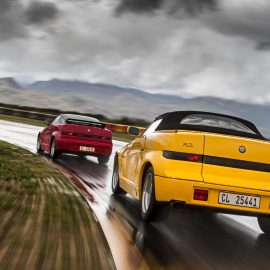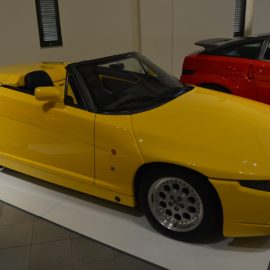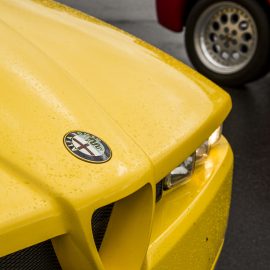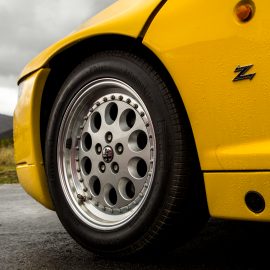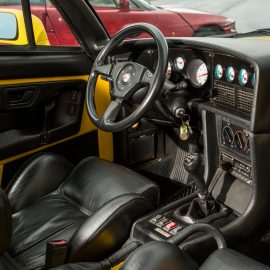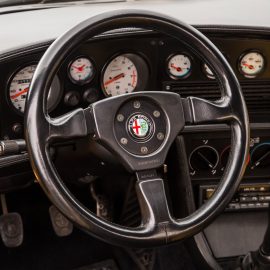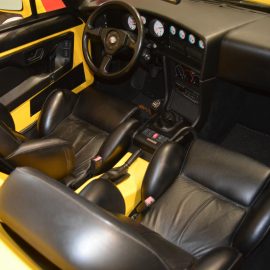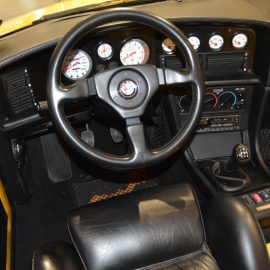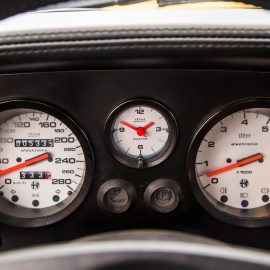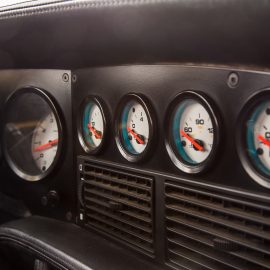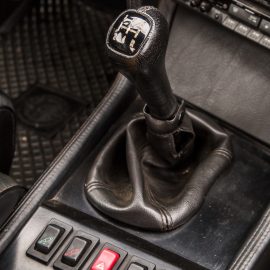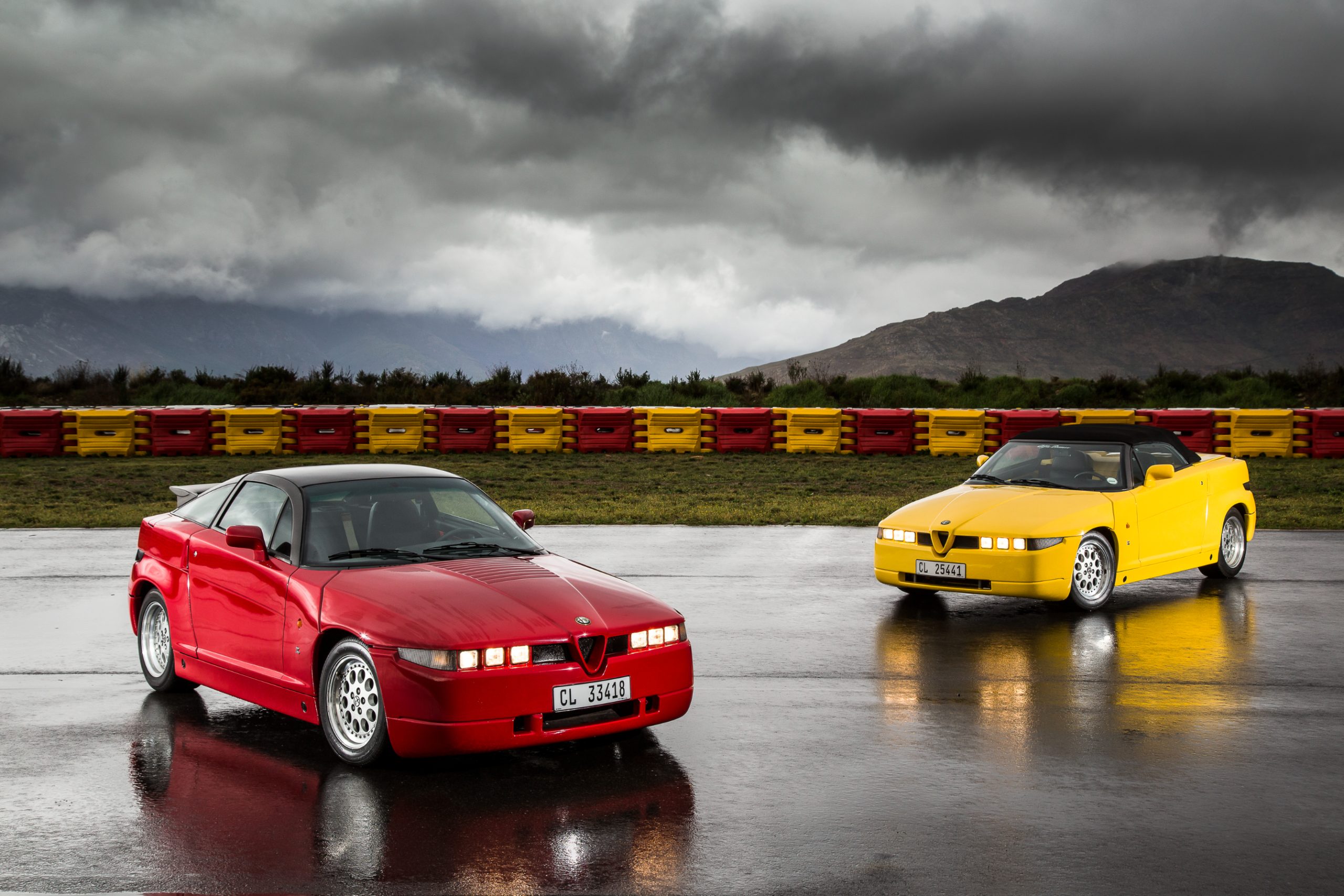
04 Sep Anniversary Celebration: Alfa Romeo RZ
Mike Monk looks at a Monster with a Sporting Heart whose origins began while the bean counters were off sick and, 30 years later, still provides a thrilling drive…
Every now and again a motor manufacturer unveils a vehicle that comes from left-field, is an ‘over the top’ technology showcase, or is simply designed to rock the establishment. Conceived in moments of great courage or sheer madness, whatever the aim we are glad they exist. So when you combine the design talents of three Italian styling studios with the ‘Cuore Sportivo’ (Sporting Heart) of one of that country’s most charismatic motor manufacturers, you would expect something special to be the outcome. That is precisely what happened in March 1989 when Alfa Romeo revealed the ES30 (Experimental Sportscar 3,0-litre) concept on the Zagato stand at the Geneva Salon. At a time when Alfa Romeo’s sporting heart desperately needed an adrenalin boost, the SZ (as it was named) actually embodied all that was great about the company’s pedigree, with only its looks setting it apart from its universally stylish forebears. Its appearance led to an immediate nickname of ‘il Mostro’ – The Monster – that helped boost the car’s attraction.
A maximum production run of 1 000 was cited but a total of 1 036 were built, and in 1992 as the SZ’s short production life was drawing to a close Alfa, not surprisingly, introduced an al fresco version – the RZ Roadster Zagato. Zagato had presented a curvaceous spider design the year before but the 100 kg-heavier RZ that did appear was a more obvious spin-off from the SZ, yet only the front fenders and fold-out boot lid are the same. For instance, there is a lack of the fluting at the back of the bonnet, and the windscreen is two inches shorter than the one in the SZ. The RZ features two suggested humps behind the seats, reminiscent of the legendary double-bubble roof from Zagato.
Like the SZ, the RZ was sold and distributed outside Italy mostly by enthusiasts and specialists, and not by the official Alfa Romeo channels. But unlike the SZ, the RZ came in a choice of colours: you could have red with a cream interior, black with red interior or yellow with a black interior. For the Japanese market there were three painted silver with a burgundy interior, and the final RZ was painted pearlescent white.
Inside, there is a painted central console that sweeps up between the seats to conceal the convertible roof storage. The leather-covered dash is plain black and the dials have black numerals on a white background. The seats are identical to the SZ and fold forward and together with the rear part of the centre console, which also folds forward to give access to a minimal amount of luggage space under the hood. The hood mechanism works manually, but the engine has to be switched off. There is an initial release on the centre console with a safety catch behind the driver’s seat that lifts the rear deck, and the hood folds out from in this cubby hole. The luggage compartment, accessed through the small flap between the taillights, contains the space-saver spare wheel, tool kit and hydraulic pump for the suspension.
The chassis of the RZ has a number of modifications to compensate for the lack of a roof, the changes taking the weight of the car up to nearly 1 400 kg, almost 200 kg heavier than the SZ. Powering the both the RZ and SZ is a slightly tweaked version of Alfa’s charismatic, tuneful and elegant 60-deg V6 mated with a five-speed transaxle incorporating a 25% limited-slip differential. The single overhead-cam, 12-valve, fuel-injected motor pumped out 157 kW at 6 200 r/min and 245 N.m of torque at what seems a fairly high 4 500, but in fact the torque curve is fairly flat from 2 500-6 000, so the motor does not rely on revs to deliver. Thing is though, it makes such a glorious sound when in the upper reaches of the rev band that you keep it spinning for the sheer aural pleasure of it all. Top speed is around 230 km/h and the 0-100 km/h time is 7,5 seconds.
The left-hand driving position is of the archetypal Italianate long arms/short legs proportion, and while the steering wheel position is fixed, the fixed-height front seats offer almost full cabin length adjustment. The pedals are offset to the right alongside a large left-foot rest. The RZ provides a slightly different driving experience to the SZ due the reduced torsional rigidity and extra weight. Twist the key and blip the accelerator to fire up the engine’s orchestral delights. Then hit the open road to savour the RZ’s raison d’être. The stubby gear lever falls easily to hand and moves precisely around its gate. The suspension is set up slightly more on the compliant side, and away from urban congestion, the RZ provides idyllic al fresco motoring pleasure. There is no ABS or other electronic guardian angels, but the all-disc brakes provide reassuring stopping power.
A production run of 350 RZ cars was announced, but it proved harder to sell than the SZ and only 278 roadsters left the factory. All but 50 were made in 1993, including FMM’s yellow example. Like most monsters, the Alfa Romeo RZ is a rare beast and a valued part of the museum’s collection. It is currently on view in Hall D alongside its red SZ sibling.




